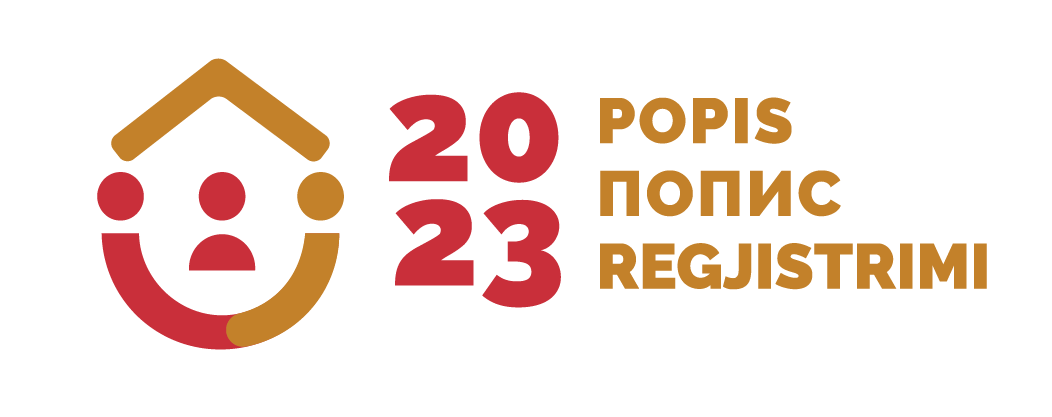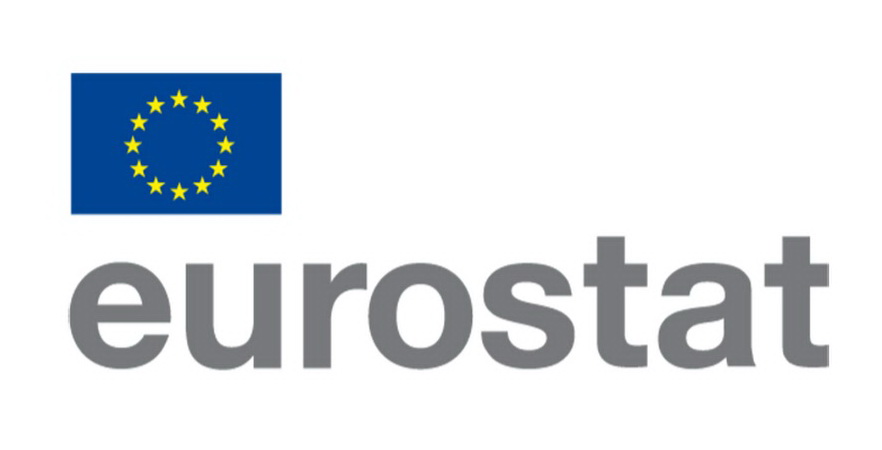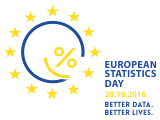| Category: |
Demographic and social statistics |
| Area: |
Population |
| Survey / data collection: |
Demographic indicators |
Note: For any question on metadata, please contact MONSTAT metadata support.
| 1. Contact Vrh |
| 1.1. Contact organization: |
Statistical Office of Montenegro - MONSTAT |
| 1.2. Contact organization unit: |
Demography and Migration Statistics Department |
| 1.2. Contact organization unit: |
IV Proleterske 2, 81000 Podgorica, Montenegro |
| 2. Metadata update Top |
| 2.1. Metadata last certified: | |
| 2.2. Metadata last posted: | 29 December 2023 |
| 2.3. Metadata last update: | 26 July 2021 |
| 3. Statistical presentation Top |
| 3.1. Data description: | Basic demographic indicators show the natural movement of the population through indices and other indicators. The most commonly used demographic indicators are: live births rate, mortality rate, rate of marriages, divorces rates, rate of infant deaths, mortality rate of children under five, vitality index, rate of growth/decline of the population, total fertility rate, general fertility rate, and specific mortality rate, coefficient of age, aging index, average age at first marriage (men, women), etc. The data are used for the purpose of making any analysis of the current and future structure of the population. |
| 3.2. Classification system: | Municipalities |
| 3.3. Sector coverage: | Not relevant |
3.4. Statistical concepts and
definitions: | Natural increase rate is the ratio of natural increase and average number of mid-year population. It is expressed in pro mille (per 1000 inhabitants).Birth rate is the ratio number of live births and estimated number of mid-year population, expressed in promille (per 1000 inhabitants). Death rate is the ratio of number of deaths and estimated number of mid-year population, expressed in promille (per 1000 inhabitants).Marriage rate is the ratio of number of marriages and average number of mid-year population. It is expressed in pro mille (per 1000 inhabitants).
Divorce rate is the ratio of divorces and estimated number of mid-year population. It is expressed in pro mille (per 1000 inhabitants).
Infant death rate is the ratio of number of dead infants and live born children expressed in pro mille (per 1000 inhabitants).
Child death rate under 5 years of age is the ratio of child deaths at age up to 5 years, and expressed in promille (per 1000 inhabitants)
Vital index is the ratio of live births to 100 deaths.
Masculinity rate is the ratio of number of males per 100 females in observed events.
General fertility rate is the ratio between the total number of live births and female fertility population (aged 15-49) during one-year period.Total fertility rate, i.e. total number of live births per one woman, i.e. the sum of appropriate specific fertility
rate, is calculated for the age interval from 15 to 49 by five year period.
Immigration rate is the ratio of immigrants and the estimated mid-year population. Usually calculated is annual
immigration rate (per 1 000 inhabitants).
Emigration rate is the ratio of emigrants and the estimated mid-year population. Usually, calculated is annual
emigration rate (per 1000 inhabitants).
The rate of migration balance is the ratio of annual net migration on the estimated mid-year population. The
rate of migration balance can be obtained as the difference between immigration rates and emigration rates
(per 1 000 inhabitants). |
| 3.5. Statistical unit: | Live birth and deaths; persons who change place of residence; marriages and divorces. |
| 3.6. Statistical population: | All live births and deaths recorded in Registers of Births and Deaths; all persons who change place of residence; population 15 year old and more. |
| 3.7. Reference area: | Montenegro and municipalities |
| 3.8. Time coverage: | 1961 |
| 3.9. Base period: | Not relevant. |
| 6. Institutional mandate Top |
6.1. Legal acts and other
agreements: | The Law on Official Statistics and Official Statistical System (Official Gazette of Montenegro No 18/12 and 047/19) defines provisions for collection, processing, and dissemination of data. The Law provides to the Statistical Office legal powers to collect and access the data necessary for the implementation of Programme and Annual Plan. The Law gives a priority to the use of administrative data and right of access to individual data that are a result of survey of other official statistical producers. As an annex to legal provisions, Statistical Office has signed several memoranda on cooperation with administrative data providers. |
| 6.2. Data sharing: | Signed agreement on cooperation with the official statistical producers:
1. Customs Administration
2. Tax Administration
3. Ministry of Finance
4. Central Bank of Montenegro
5. Trilateral agreement (MONSTAT, Ministry of Finance, and Central Bank of Montenegro)
International institutions:
1. EUROSTAT
2. UN organizations
3. IMF
4. World Bank |
| 7. Confidentiality Top |
| 7.1. Confidentiality - policy: | Articles 53-60 of the Law on Official Statistics and Official Statistical System (Official Gazette of Montenegro No 18/12 and 047/19) provide a framework for protection, use, and transmission of confidential data. MONSTAT has produced two comprehensive rulebooks that cover the procedures for individual data protection as well as keeping individual records. With purpose of the meeting legal framework on functioning of security system and statistical confidentiality there was adopted the Rulebook on Keeping Statistical Data by which Manner, Time, Technical Conditions and Organization of Statistical Data Storage to Prevent Their Destroying, Misappropriation, and Unauthorized Use is Regulated as well as the Rulebook on Contents and Manner of Keeping Records on Users of Individual Statistical Data by which contents and manner of keeping records on users of individual statistical data is regular.
Pursuant to the Article 59, an access to the confidential data is limited to persons performing duties and tasks of official statistical producer and up to the stage the data are necessary for official statistical production. Persons that performs duties and tasks within official statistical producers must sign the statement on respecting the principle of confidentiality.
Law on Official Statistics and Official Statistical System is aligned with the Regulation No 223/2009 and the Regulation (EU) 2015/759 from 29 April 2015 that also regulate confidentiality provisions.
The Government of Montenegro adopted the Statement on Commitment of Confidence in Official Statistics (Commitment of Confidence). |
7.2. Confidentiality - data
treatment: | Statistical Office of Montenegro receives data of birth, deaths, and migration from Ministry of Interior in txt document without identification, while data on marriages and divorces get from basic courts (in statistical base data was entering without identificator) Data are published as aggregate at the level of municipality, as the lowest level. The rules for accessing micro data are defined by the Law on Official Statistics and Official Statistical System of Montenegro, Articles 58 and 59. |
| 8. Release policy Top |
| 8.1. Release calendar: | The Law on Official Statistics and Official Statistical System (Official Gazette of Montenegro No 18/12 and 047/19) stipulates that official statistical producers prepare, update, and publish Statistical Release Calendar. It is published on the website of Statistical Office not later than 20 December for the next year, for all official statistical producers that includes date of releasing statistical data. Any change in date of releasing in the Calendar is published in advance in accordance with the Procedure on Unplanned Revisions. |
| 8.2. Release calendar - access: | http://www.monstat.org/eng/page.php?id=12&pageid=12 |
| 8.3. User access: | General aim of official statistical producer is to meet the needs of users, and to make an access to statistical data to users in an understandable manner, simultaneously and under the same conditions. Statistical Office is obliged to produce and disseminate official statistics in objective, transparent and professional manner, so that all users are equally treated. |
| 10. Accessibility and clarity Top |
| 10.1. News release: | Release is published once a year, and it is available on the official website using the following link: http://monstat.org/eng/page.php?id=1294&pageid=52 |
| 10.2. Publications: | Statistical Office publishes the following regular publications: 1. Statistical Yearbook, 2. Montenegro in figures, 3. Monthly statistical review. In addition to the above regular ones, Statistical Office publishes also additionally publications. Some of the most important additional publications are as it follows: 1. Women and Men in Montenegro, 2. The most often used statistical data All publication published by Statistical Office are available at the following link: http://www.monstat.org/cg/publikacije.php?id=100 |
| 10.3. Online database: | Not available. |
| 10.4. Micro-data access: | The Law on Official Statistics and Official Statistical System (Official Gazette of Montenegro No 18/12 and 047/19) regulates rules under which external users can obtain an access to individual data for needs of research. Article 58 defines types of scientific and research organizations that can obtain such data. Providing individual data without identifier is possible only upon a written request of scientific and research institutions, with purpose of performing scientific and research activities as well as international statistical organizations and statistical producers from other countries.
Research entity signs the agreement with Statistical Office, and it signs the statement on respecting the confidentiality principle.
Official statistical producers keeps a separate records on users and purpose of using the statistical data given to these users. |
| 10.5. Other: | Not relevant. |
10.6. Documentation on methodology:
domain: | Methodology about main demographic indicators is available on the link: http://monstat.org/userfiles/file/demografija/metodologija/Osnovni%20demografski%20pokazatelji%20en.pdf |
| 10.7. Quality documentation: | The Law on Official Statistics and the Official Statistical System ("Official Gazette of Montenegro" No. 18/12 and 47/19) defines the commitment to quality, which ensures that producers of official statistics in Montenegro work and cooperate in accordance with international principles of quality of the statistical system.
In accordance with the ESS Quality Declaration, Article 338 of the Treaty on the Functioning of the EU, Regulations 759/2015 and 223/2009 and the European Statistics Code of Practice, the following documents are adopted:
1. Quality Strategy of the Statistical Office
2. Guide for the implementation of the Quality Strategy in the Statistical Office;
3. Implementation plan |
| 11. Quality management Top |
| 11.1. Quality assurance: | Statistical Office has chosen the implementation of elements of TQM (Total Quality Management) model that foster development and improvement of functioning of:
- Institution,
- Official statistical result production, and
- Individual.
Within middle-term deadline, Statistical Office has chosen the TQM implementation through the following objectives:
1. Strong commitment to users and other interested parties,
2. Quality statistical processes and products,
3. Professional orientation of staff members,
4. Constant improvements,
5. Reduction of overburden of reporting units. |
| 11.2. Quality assesment: | |
| 12. Relevance Top |
| 12.1. User needs: | International users:
- Eurostat,
- World Bank,
- UN organizations,
- International Monetary Fund
National users:
- Ministries and other public administration bodies,
-Local government, and
-Other local government bodies.
- Central bank,
- Non-governmental organizations,
- Students,
-Researchers,
- Media. |
| 12.2. User satisfaction: | The Statistical Office has adopted the Quality Management Strategy, the Guidebook to the Implementation of the Quality Management Strategy, as well as the Plan for the Implementation of the Quality Policy.
In order to measure the degree to which fulfills obligations towards users and within the new quality policy, the Statistical Office conducted User satisfaction survey.
The results of the survey are available on the Statistical Office website, link: http://monstat.org/uploads/files/2.%20Izvjestaj%20o%20zadovoljstvu%20korisnika%20ENG%20(Autosaved).pdf |
| 12.3. Completeness: | Not relevant, because there is no exit mandatory EU regulation. |
| 13. Accuracy and reliability Top |
| 13.1. Overall accuracy: | Since the data source is administrative , all cases of birth, death, marriage and divorce have been included and reported cases of change of residence, level of accuracy is high. |
| 13.2. Sampling error: | Not relevant. |
| 13.3. Non-sampling error: | Not relevant. |
| 14. Timeliness and punctuality Top |
| 14.1. Timeliness: | Final data is published on day defined by Statistical Release Calendar. Calendar is available on the link: http://monstat.org/eng/page.php?id=12&pageid=12 |
| 14.2. Punctuality: | Data is published on the day defined by the Statistical Release Calendar and by the Annual Plan. |
| 15. Coherence and Comparability Top |
15.1. Comparability -
geographical: | Data related to live births and deaths collected in accordance with the EU regulation which ensure comparability with other countries who use the same methology.
Data related to marriages and divorces collected in accordance with the UN recommendations which ensure a comparability with other countries who use the same methodology.
Migration - not relevant. |
| 15.2. Comparability over time: | 1961 |
15.3. Coherence - cross
domain: | There is no similar survey for the comparison. |
| 15.4. Coherence - internal: | Not relevant. |
| 17. Data revision Top |
| 17.1. Data revision - policy: | Statistical Office has adopted the revision policy and it is available on the website http:http://monstat.org/userfiles/file/o%20nama/2017/Revision%20policy.pdf |
| 17.2. Data revision - practice: | Annual Plan foresees a final announcement of data. According to this, regular revision are applied for this survey. There is no significant and unplanned revision. |
| 18. Statistical processing Top |
| 18.1. Source data: | Survey related birth, dead, estimated number o fpopulation, marrages and divorces and mgration. |
18.2. Frequency of data
collection: | yearly |
| 18.3. Data collection: | |
| 18.6. Adjustment: | Not relevant. |







